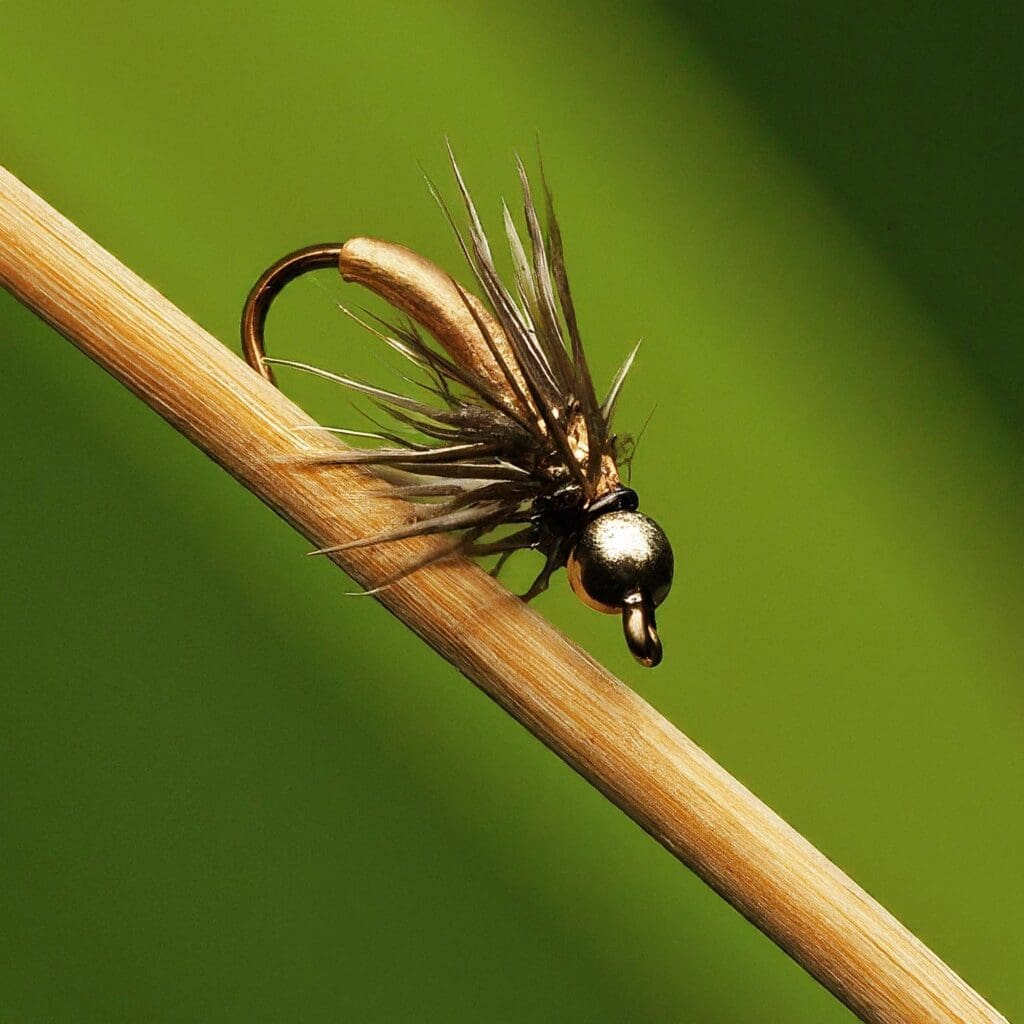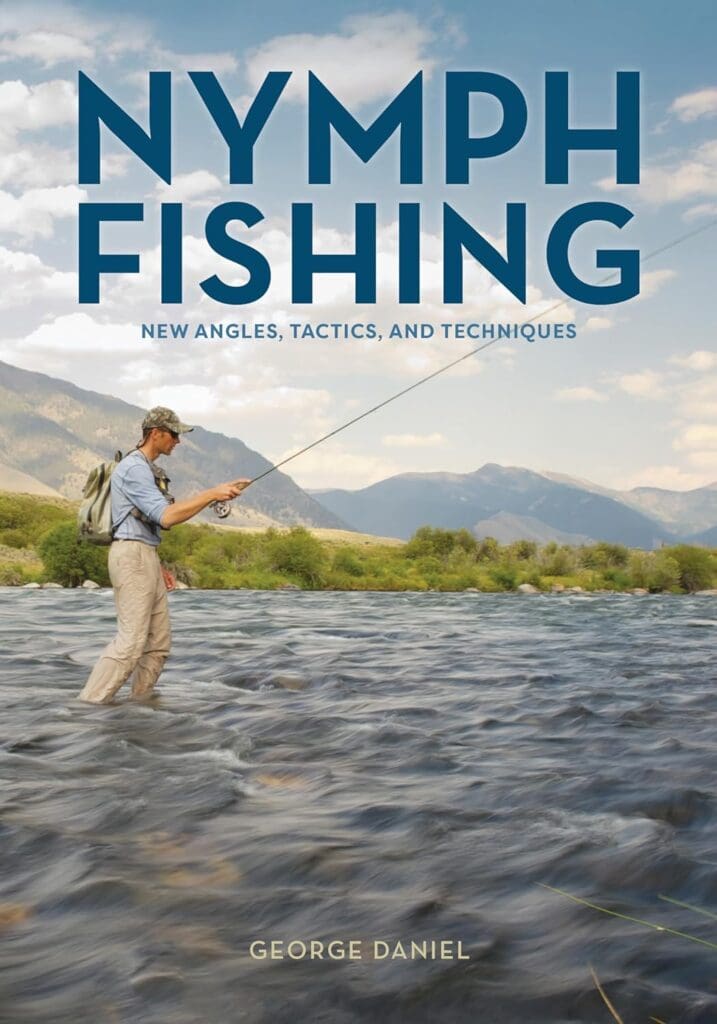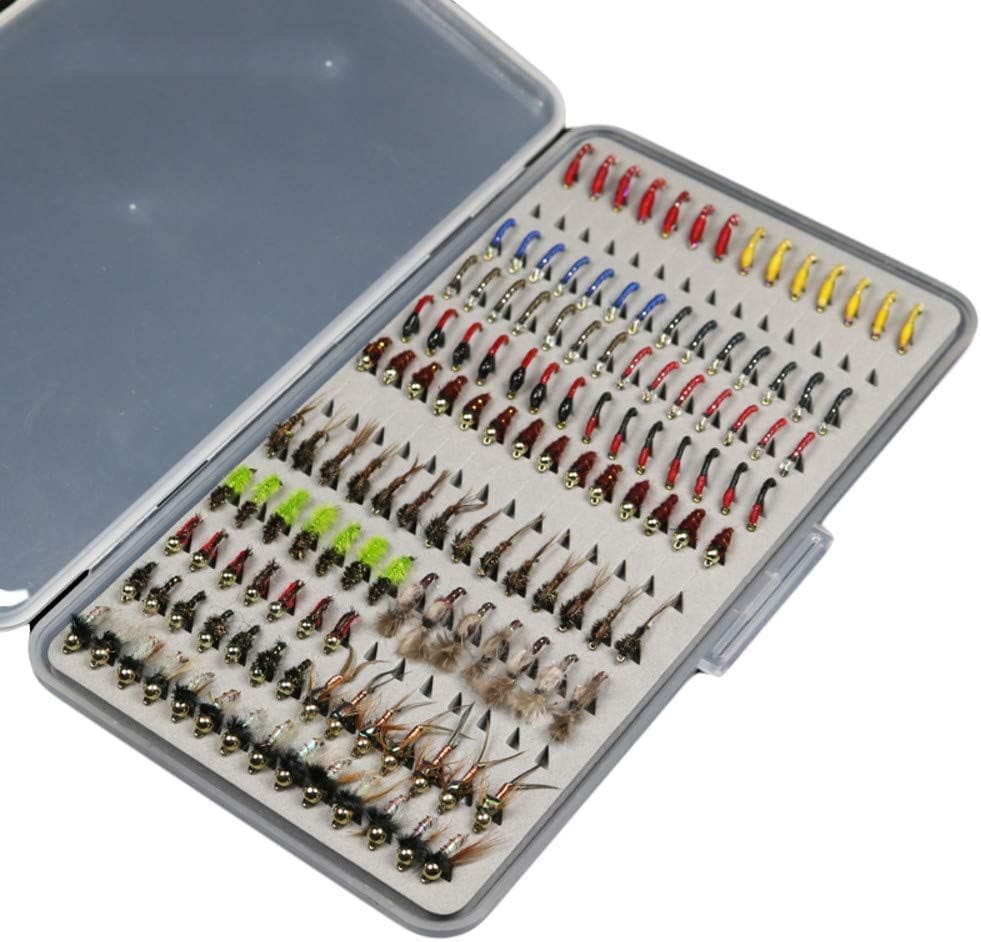Nymph Definition
A nymph is a subsurface fly used in fly fishing to imitate immature insects.
Expanded Explanation
In the realm of fly fishing, the nymph is a quintessential representation of the underwater life stages of insects. It is a pivotal lure for ensnaring fish that forage beneath the water’s surface. Anglers use submerged flies to imitate fish’s natural prey. This significantly increases their chances of making a catch. As we transition into “Unveiling the Secrets of Aquatic Insects: A Fly Fisher’s Guide,” we’ll explore the artistry and science behind crafting these lures. It reveals how deeply understanding aquatic insects can enhance the fly fishing experience.
Unveiling the Secrets of Aquatic Insects: A Fly Fisher’s Guide
From Tiny Nymphs to Trophy Fish
The underwater world of aquatic insects holds a treasure trove of knowledge for fly fishers. This guide dives into the fascinating journey of nymphs, from their crucial role in aquatic ecosystems to their impact on fly fishing success.
The Essential Nymph Stage
- Foundation for Growth: During this stage, insects develop significantly, building the base for a healthy adult life.
- Multiple Moults: They shed their exoskeletons at various times to accommodate their growing bodies.
- Survival Skills: They develop adaptations for their aquatic environment, essential for survival and future success.
- Learning Curve: These immatures learn vital skills like hunting, hiding, and avoiding predators.
- Energy for Change: This stage is all about accumulating energy reserves needed for their dramatic metamorphosis.
- Metamorphosis Prep: The nymph stage prepares them for the incredible adult transformation.
- Healthy Ecosystems: A successful larval stage increases the chance of reaching adulthood, impacting the ecosystem’s overall health.
- Adapting to the Environment: Juveniles adapt to their specific underwater habitat, ensuring they thrive.
- Predator-Prey Balance: They play a vital role in maintaining a healthy ecosystem balance in the aquatic food chain.
- Indicators of Water Quality: The presence and health of immatures can indicate the water body’s overall health.
A World Under Water: Nymph Habitats
- Riverbed Dwellers: Many larvae make their home on the riverbed, a stable environment rich in food sources.
- Living Among Plants: Aquatic vegetation provides essential cover and attracts prey, aiding their growth.
- Seeking Shelter: In these habitats, juveniles seek refuge under rocks or within the sediment to protect themselves from predators and strong currents.
- Food Sources: The riverbed and aquatic plants teem with microorganisms fueling larval growth. Their diet includes smaller insects, plant matter, and detritus.
- Breathing Underwater: Larvae obtain oxygen through their skin or gills, relying on clean, oxygen-rich water.
- Built for Water: Streamlined bodies help them navigate currents, while some have hooks or suction cups to cling to surfaces.
- Part of the Ecosystem: Nymphs serve as prey for fish and other predators, playing a crucial role in the food web.
- Preparing for Change: Juveniles undergo multiple moults in these habitats, growing more significant with each one. Eventually, they transition to the pupa stage, sometimes moving towards land.
Transformation: A Cycle of Growth
- Shedding the Old: Aquatic nymphs begin their life cycle by moulting and shedding their exoskeleton as they grow.
- Growth Triggers Moulting: When the current exoskeleton becomes too tight, it triggers moulting.
- Building a New Home: Beneath the old exoskeleton, a new, larger one starts to form, initially soft and flexible.
- Escape from the Shell: The larva splits its old exoskeleton and carefully emerges from its former shell.
- Expanding into the New: This exoskeleton is still soft after shedding. The larva inflates itself with water or air to expand its body, ensuring room for growth within the new shell.
- Hardening Up: Over a few days, the new exoskeleton hardens, providing crucial protection.
- Repeating the Cycle: This moulting process is repeated several times throughout this stage, allowing for growth and development.
- Preparing for Adulthood: The final moults prepare the nymph for transformation into its adult form, including developing wings in flying species.
- Fueling the Change: Moulting requires a lot of energy, so nymphs eat more frequently during this process.
- Vulnerable Times: Moulting larvae are vulnerable to predators and often hide or choose safe times to moult.
Mimicry and Adaptation: Nature’s Secrets
- Miniature Mimics: Juveniles often resemble their adult counterparts, helping them blend in and confuse predators.
- Life Without Wings: Unlike adults, larvae lack wings, which would hinder their movement underwater.
- Breathing Underwater: Larvae, equipped with gills, can efficiently extract oxygen from water, allowing them to remain submerged.
- Streamlined for Speed: Many have streamlined bodies for effortless movement through water, reducing resistance against currents.
- Holding On Tight: Some have specialized appendages like hooks or suction cups to hold onto plants or rocks in fast-moving waters.
- Camouflaged for Survival: They often have colours and patterns that camouflage them in their surroundings, protecting them from predators.
- Sensing the World: Nymphs use their well-developed sensory organs to detect vibrations and chemical signals in the water. This allows them to locate prey and avoid predators.
Crafting Precision: How Aquatic Larvae Inspire Nymph Fly Design
Understanding the lifecycle and adaptations of aquatic larvae provides invaluable insights into the strategies for successful fly fishing. These creatures’ abilities to camouflage, breathe underwater, and navigate their aquatic environments are mirrored in the design of nymph flies. As we transition into discussing the components of nymph flies, it’s clear that each aspect of these artificial lures is crafted with precision. This attention to detail aims to replicate the larvae’s natural appearance and behaviour, enhancing the angler’s ability to attract fish. Let’s delve into the intricacies of these flies and uncover how the knowledge of larval stages informs their design and use.
Critical Components of Nymph Flies for Effective Fly Fishing

Nymph flies imitate the underwater stage of aquatic insects, which is vital for fly fishing. The components include:
- Hook: Serves as the base. The size and shape of the imitation varies depending on the type of nymph being imitated.
- Weight: Often added. Helps with sinking to the desired depth.
- Thread: Binds materials to the hook. Matches the colour scheme of the aquatic insect.
- Tail: Mimics the insect’s tail. Made from feathers or fibres.
- Body: Represents the insect’s torso. Constructed from dubbing, synthetic materials, or fine wire.
- Ribbing: Adds segmentation and durability. Made from wire or tinsel.
- Thorax: Larger than the body. Often made with dubbing to add bulk.
- Wing case: Suggests the wings of the developing insect. Crafted from feathers, synthetic material, or thin skin.
- Legs: Optional. Small feathers or fibres can be added to mimic the insect’s legs.
- Bead head: Commonly used. Adds weight and represents the head of the insect.
Each component plays a specific role, aiming to accurately represent the nymph stage and attract fish.
Importance
Understanding how to use a larva imitation fly is vital. It helps anglers catch fish that ignore surface lures. This is pivotal for attracting fish that prefer to feed on these underwater creatures.This knowledge significantly improves fishing success.
Context and Usage
Anglers choose a subsurface fly based on the local insect life. This choice ensures the lure matches what fish are eating. It’s about mimicking nature as closely as possible.
Using Nymph Examples
Example 1: An angler uses a stonefly underwater in a fast-moving stream, where stoneflies are common, to attract trout.
Example 2: In a clear mountain lake, a mayfly nymph might be used during a mayfly hatch to catch feeding fish.
Understanding the Glossary Term
A common misunderstanding is that all underwater flies are the same. There are many types, each designed to imitate different insects.
Related Glossary Terms
- Dry Fly: Unlike a underwater fly, a dry fly floats on the water’s surface, imitating adult insects.
- Streamer: Streamers imitate larger prey like fish or leeches, used in different fishing scenarios than nymphs.
Nymph Visual and Reading Aids
External Resources
Explore the fundamentals of larva imitation with ‘Introduction to the Art of Nymph Fly Fishing,’ a comprehensive guide that delves into practical techniques for mastering this subtle and productive method of fly fishing. Perfect for anglers looking to enhance their skills and catch rates beneath the water’s surface.
“RIVER NYMPHS” at Yorkshire Dales Flyfishing provides an insightful look into aquatic insect imitation an essential role in successful river fly fishing. Highlighting various nymphing techniques and the importance of choosing the proper one based on size, silhouette, and weight. The guide offers valuable tips for anglers targeting trout and grayling across all seasons. For a deeper understanding, visit Yorkshire Dales Flyfishing.
Related Articles
Best Belly River Alberta Camping Fly Fishing Ultimate Guide: This is an article about fly fishing and camping in Alberta. It discusses the Belly River, a place known for its beautiful scenery and diverse trout. The article offers information for both experienced and beginner fly fishers, including tips on what to fish for and where to find it.
The Ultimate Guide to Fly Fishing in Waterton Lakes National Park provides essential insights for anglers aiming to explore the unique fishing opportunities within this stunning natural setting. It covers the best fishing spots, gear recommendations, and tips for a memorable fly fishing adventure in the park.

